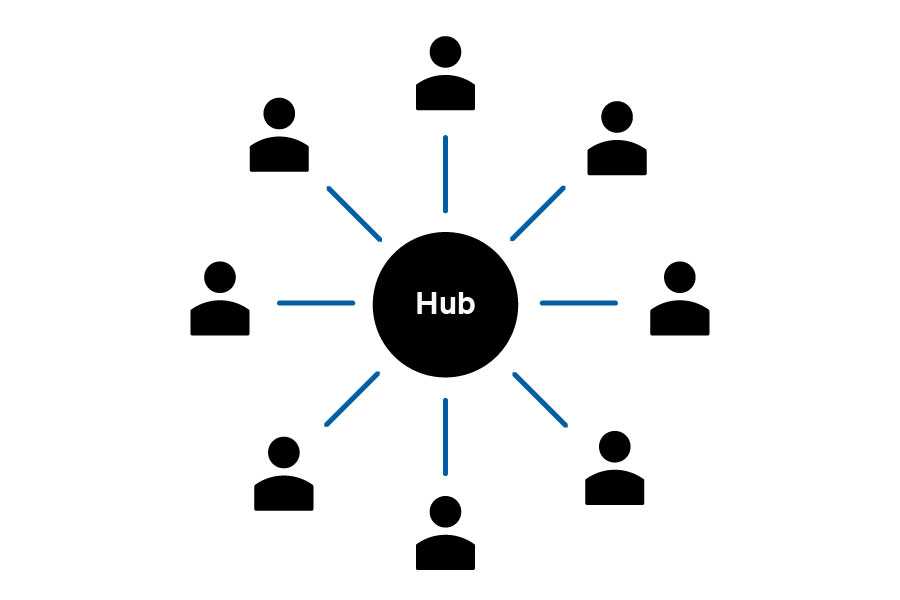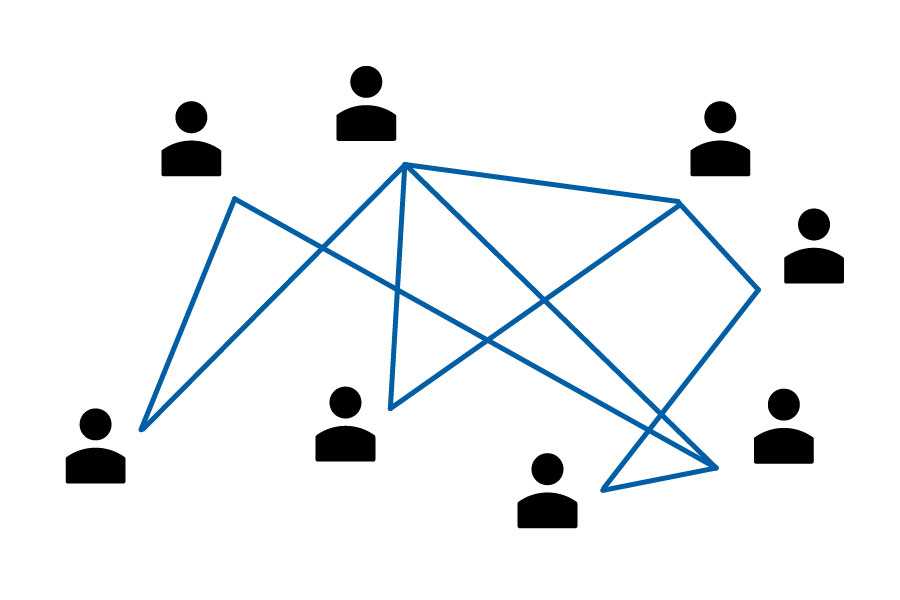What the internet is
Before we start building a web application, we need to understand a little about how the internet works.
The internet is a global network of computers, trading data back and forth. It has its origins in a number of 1960s military and scientific projects.
Why the military cared
The earliest computer networks relied on a central "hub" computer. If two computers (or "nodes") on the network wanted to communicate, they needed to send data through the central hub.
This setup wasn’t very resilient, as a strike on the central hub could disable the entire network.

The earliest ancestor of the internet is the US military project ARPANET. This was a decentralised network, without a single central hub. With many ways for data to get from place to place, it was more resilient than earlier networks. A coordinated series of strikes would be needed to take it down.
“The goal was to exploit new computer technologies to meet the needs of military command and control against nuclear threats, achieve survivable control of US nuclear forces, and improve military tactical and management decision making.”

The internet backbone
The internet is actually a global network of smaller regional networks.
In densely populated areas like major cities, there’s usually a dense infrastructure of copper and fiber optic cables to carry data around. In these places, there are many possible routes for a signal to travel between one computer to another.
However, in sparsely populated or inhospitable places, like under the oceans, there are far fewer ways for signals to get around.
Those routes that do exist, such as expensive undersea cables, are collectively known as the internet backbone.
Nowadays, the internet backbone is part of the world’s critical communications infrastructure. There have been incidents where damage to undersea cables has caused communication disruptions or blackouts.
Part of How the web works
- What the internet is
- The world wide web
- Making a request
- Developer tools